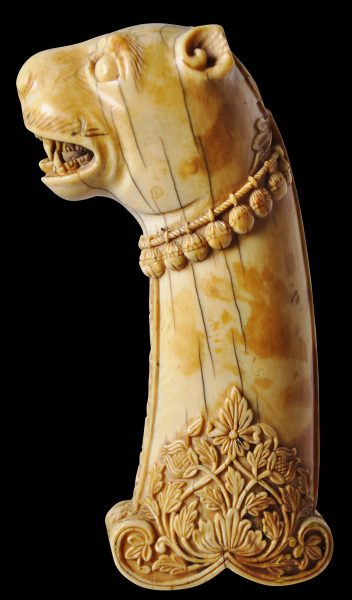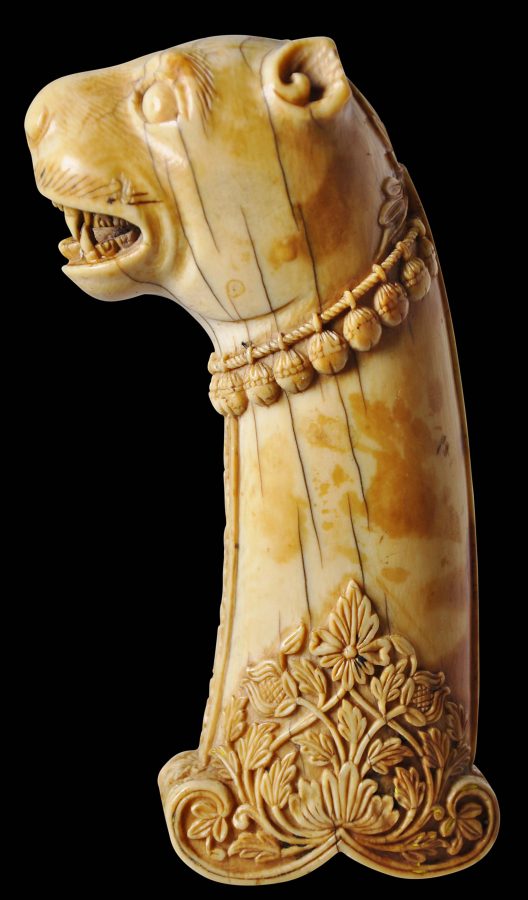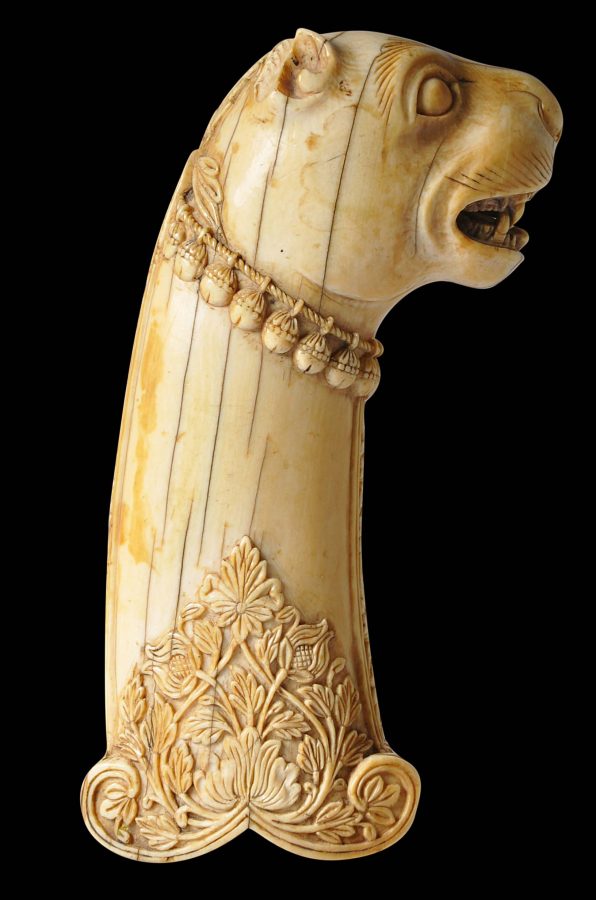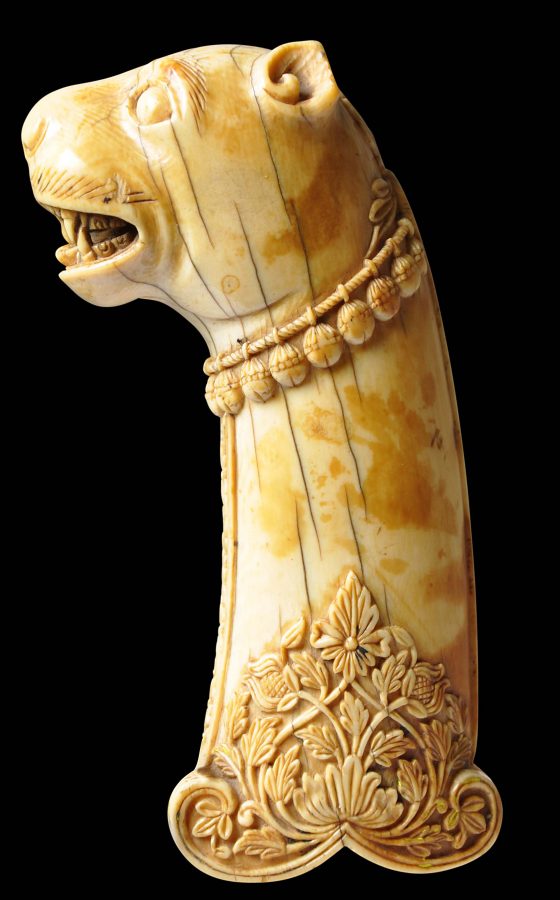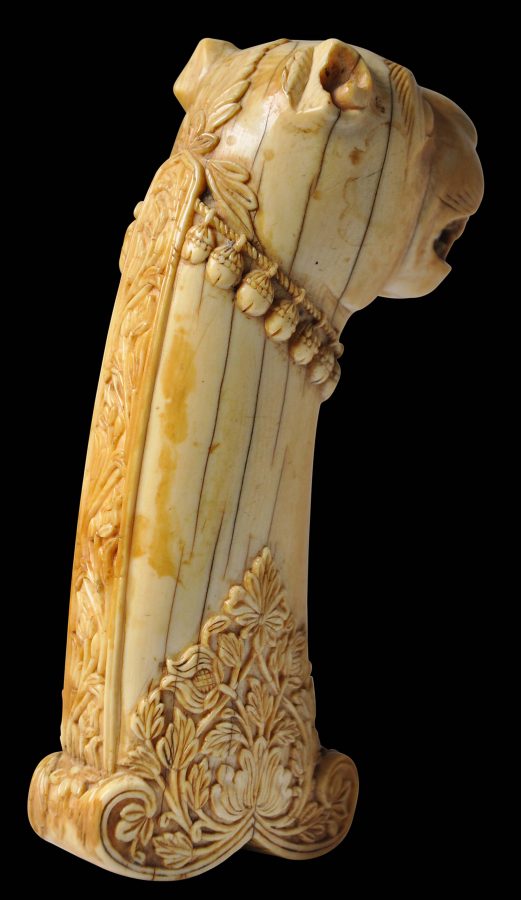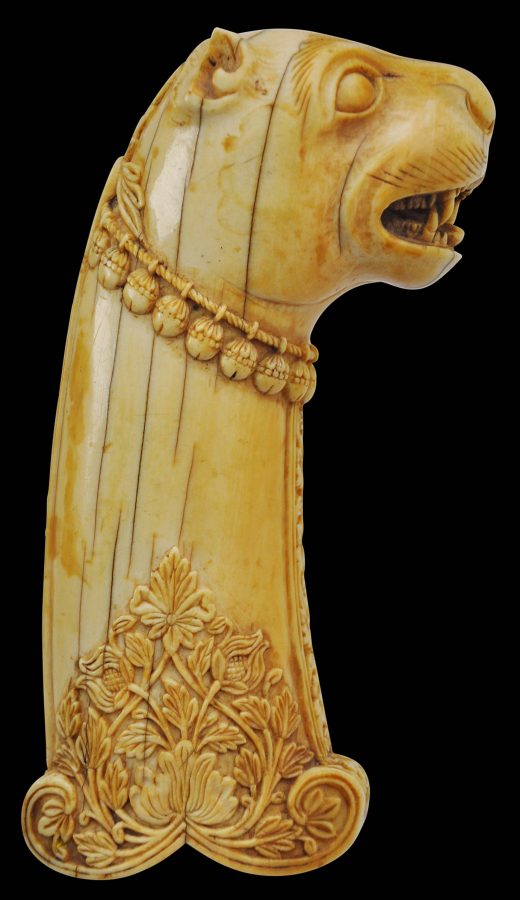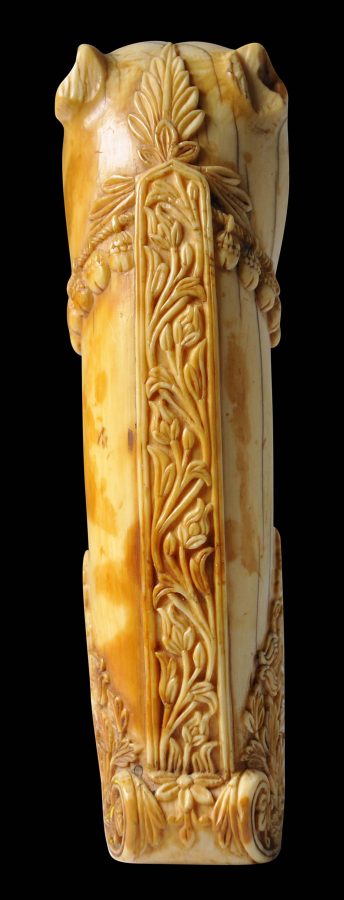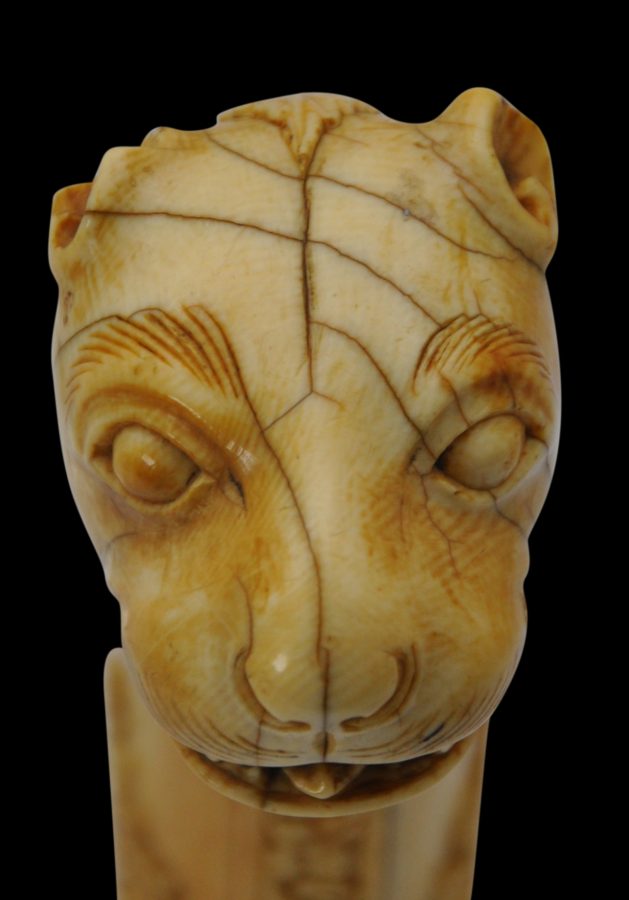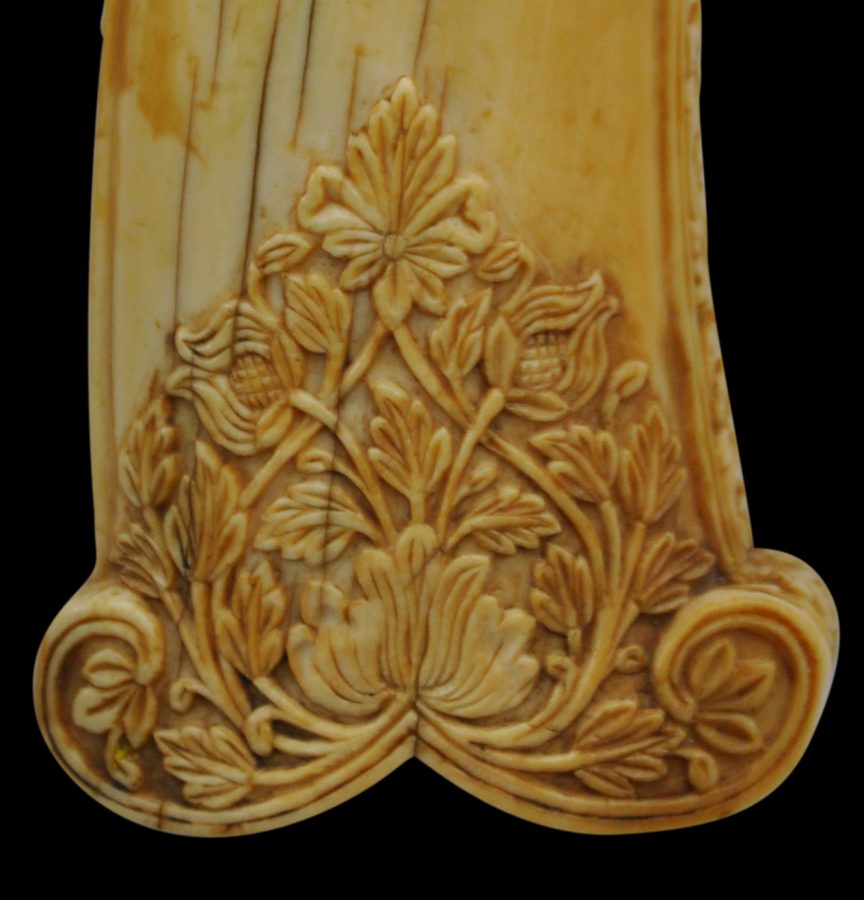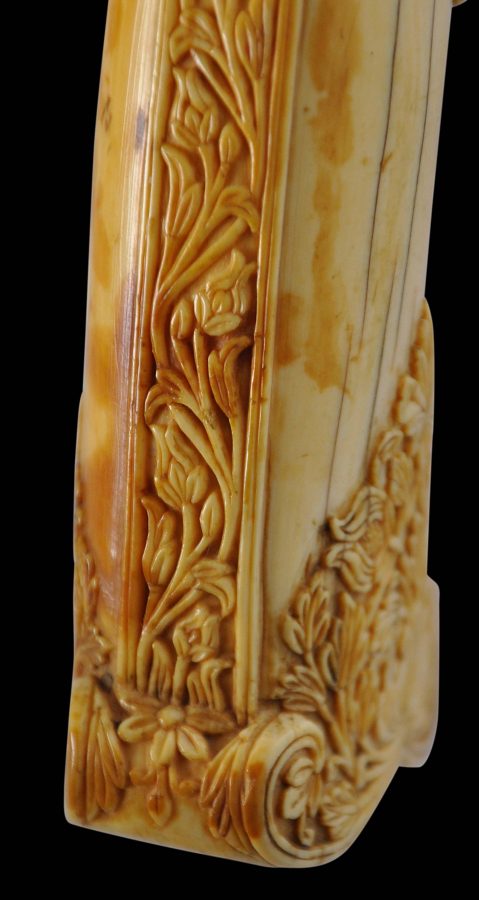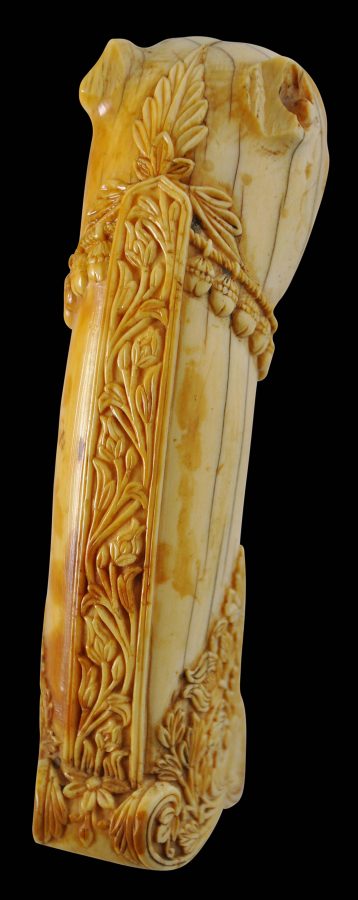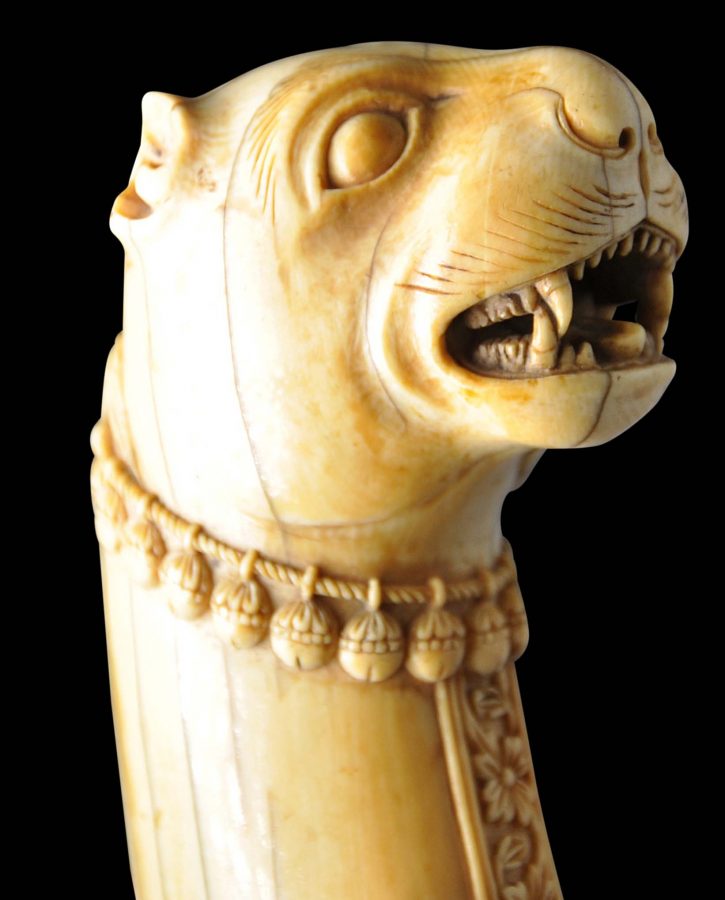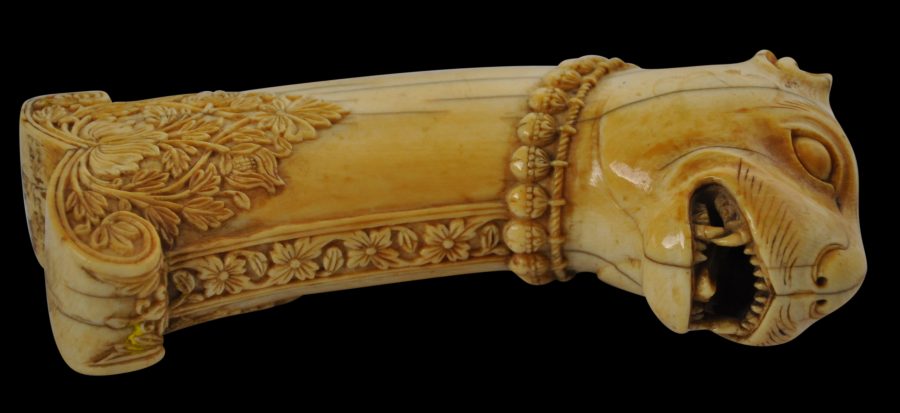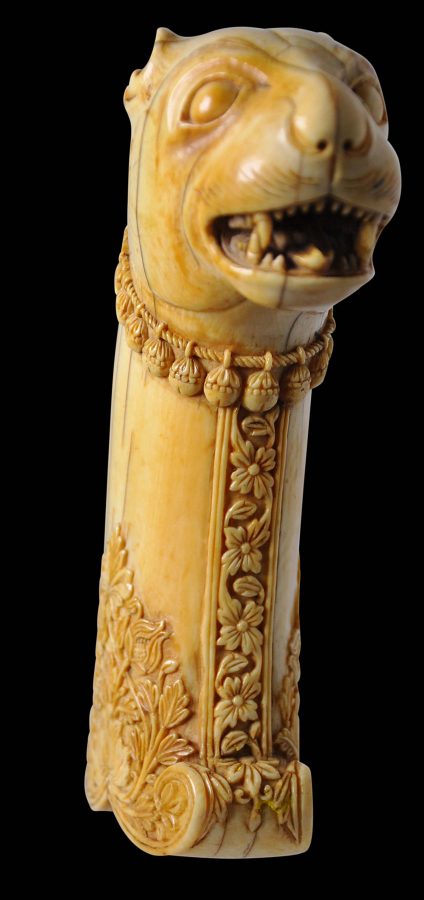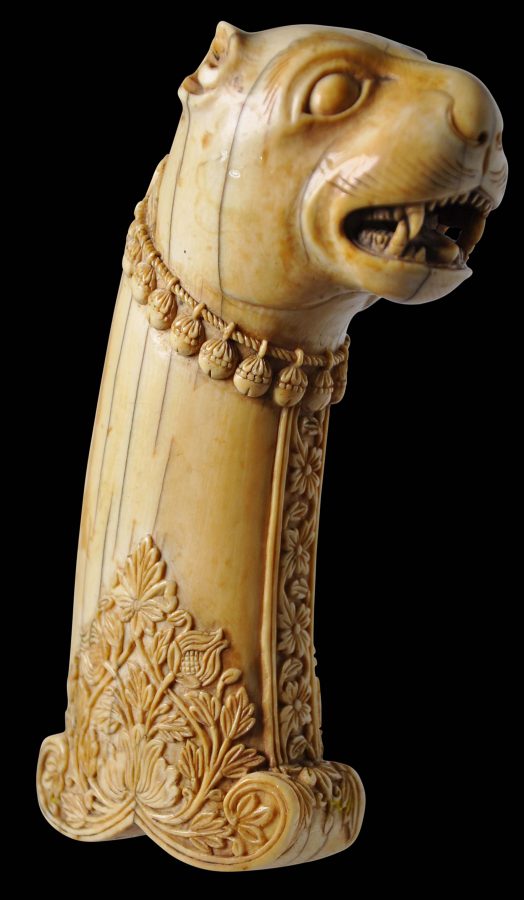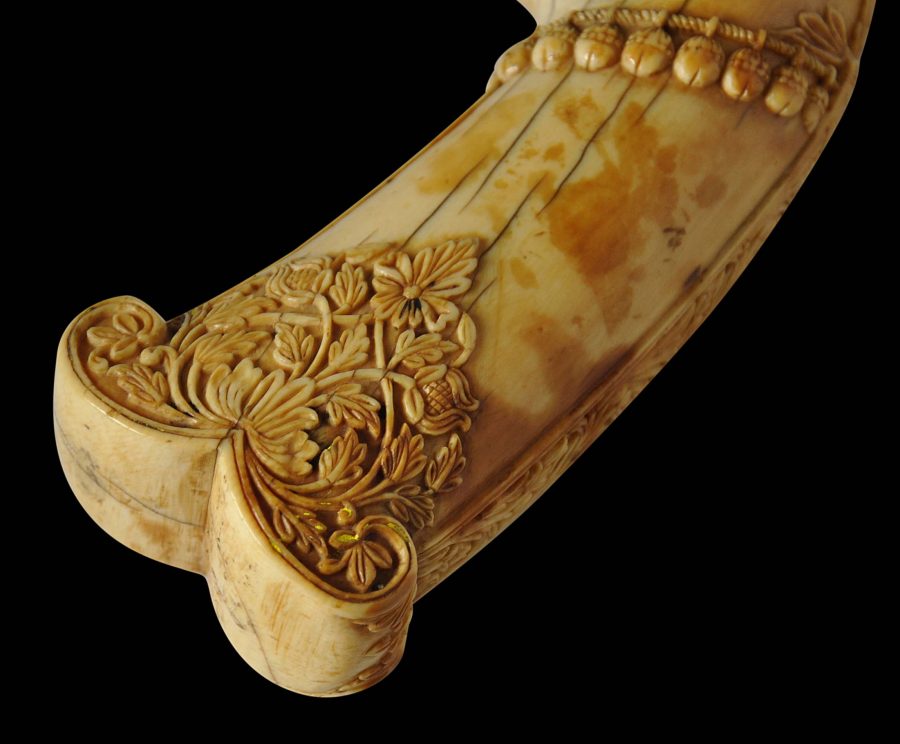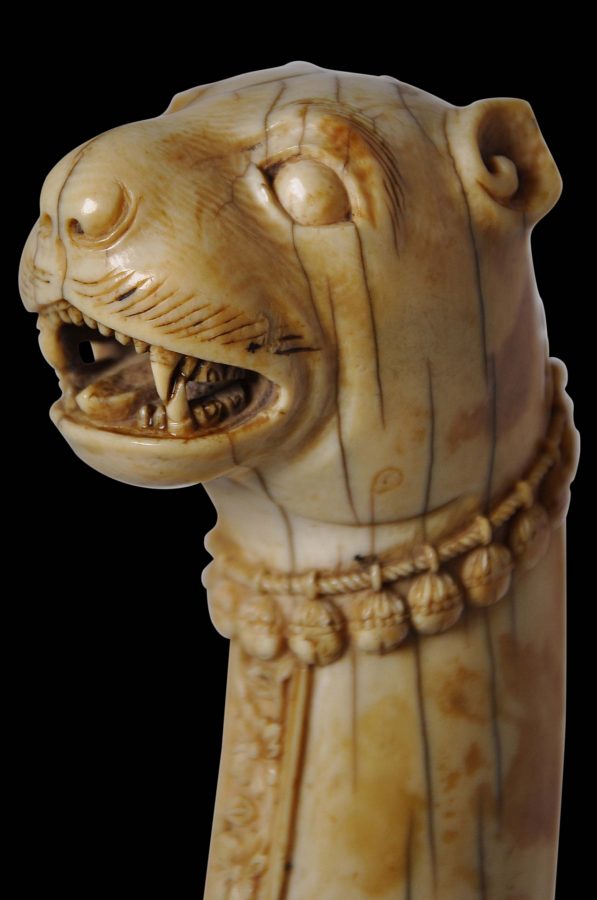This rare and extremely finely carved ivory dagger hilt was exhibited at the Brooklyn Museum in 1982. It is in the form of a lion’s head is from either northern Mughal India or the Deccan. The head has an open mouth with bared teeth, engraved whiskers and carved eyes, and a fine collar of bells suspended from fine ropework about the neck. The quillons and sides are carved deeply with Mughal-esque interlocking flowers and foliage which incorporate Ottoman-influenced stylised tulips in the manner of earlier Mughal carving.
The detail is superb. The floral work on the sides is among the best such earlier Mughal/Deccan ivory carving work we have seen. The detail to the mouth is also excellent: the incisor teeth are perfectly curved and the tongue is realistically curved and ridged. There are even two small holes drilled in the back of the mouth to denote the trachea and oesophagus.
The top edges of the ears have some fritting – perhaps not an unreasonable loss for an ivory hilt of this age and rarity – but otherwise there are no losses or repairs. The ivory itself has a superb warm and honeyed patina. The hilt was never attached to a blade; its base remains undrilled.
References
Hales, R., Islamic and Oriental Arms and Armour: A Lifetime’s Passion, Robert Hale CI Ltd, 2013.
Poster, A., Indian and Southeast Asian Ivories: Selections from Local Collections, Brooklyn Museum, 1982.


